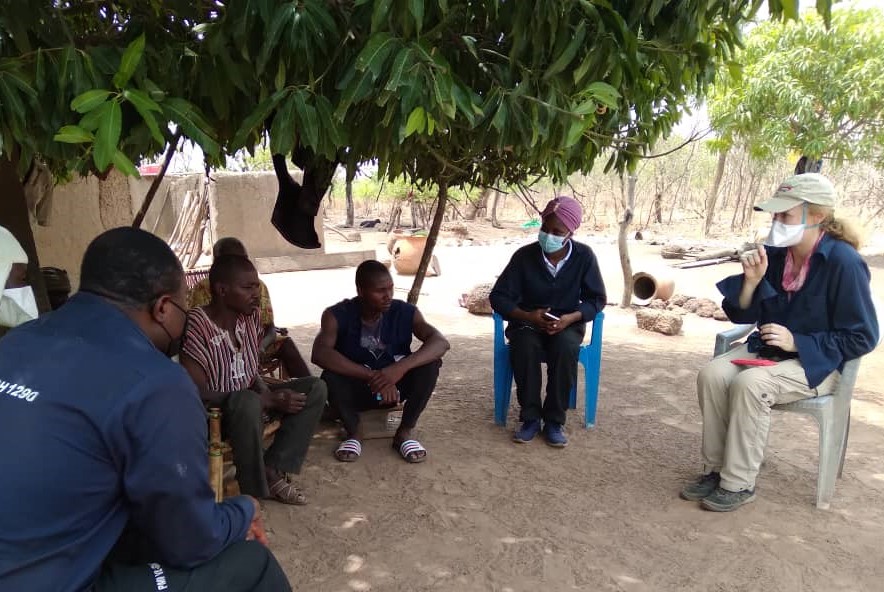
In Tatale-Sanguli District (TSD) of Northern Ghana malaria mortality dropped by 80 percent from 2018 to 2020, according to reports from the regional health directorate. This decrease corresponds to the support the district started receiving from the U.S. President’s Malaria Initiative (PMI) VectorLink Project, which conducts indoor residual spraying (IRS) to kill the mosquitoes that carry the malaria parasite. By 2021, with the help of the project, the leaders of the district’s Tangbabong community knew that fighting this deadly disease required commitment. For IRS to be successful, 85 percent of the homes in the targeted area must be sprayed to achieve community protection. In Tangbabong, these community leaders see IRS as a top priority in their efforts to end malaria.
When the chief and elders are informed about the spraying date, they prepare the community. A gongong (a local drum at the chief palace used to make important announcements) is beaten to inform community members about the benefits of the spraying and the date it will occur. Community leaders mobilize households and support community health volunteers to remind homeowners to prepare for spraying and to comply with health and safety guidelines.
On the day of spraying, every household removes their belongings from their homes and dedicates the day to spraying-related activities, including providing water for mixing insecticide. In some instances, a community health volunteer together with community members prepare the homes of neighbors who have traveled to ensure that no one is missed in benefiting from IRS. This support is also extended to neighbors who are unable to remove their belongings themselves. Upon the arrival of the spray team, homeowners are so eager to have their homes sprayed early that they will urge spray operators to come to their homes first.
While the spray team is in the community, the chief and elders meet with the project team to express their appreciation and hope that together malaria can be eliminated just as guinea worm was in the Northern Region in 2010. If a home is not sprayed during the first IRS visit, community elders follow up with a community health volunteer or community health nurse, and in some instances, through a recruited project staff living in the community, to request the spray team to revisit the community.
The success of IRS in Tangbabong (98.8% spray coverage) in 2021 is largely due to community leaders taking the steps needed to ensure that the community is protected from the disease and because community members recognize that vector control is a part of their communal responsibility. It was after the 2020 spray campaign when spray coverage reached 92.9% that the chiefs and elders of Tangbabong decided to increase coverage in subsequent campaigns. Engaging the community in the 2021 IRS campaign resulted in the improved coverage of 98.8%, protecting 410 community members. Today, community leadership is happy to have one of the best spray coverages comparable to their 10 neighboring villages where the average coverage is 94%.
Chief Bechanignan said, “I previously could not enjoy the evening breeze in my home because of mosquitoes, but now I am able to do so for a long while before going to bed.” He expressed his gratitude and pledged to “always ensure that his community participates in IRS.”


